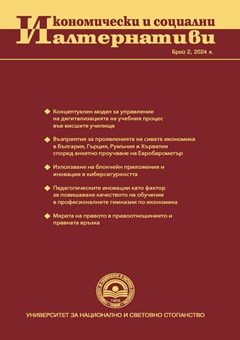The Digital Divide in the European Union in 2021
Author: Monika Moraliyska
Abstract
The main research question is to explore whether there is a digital divide in the European Union and to suggest a scientific method to define the member states’ digitalization performance in 2021. The methodology includes a hierarchical clustering approach based on data from the annual Digital Economy and Society Index (DESI) of the European Commission. The goals of this study are: 1/ To make a comparative study of the EU countries according to their performance in each of the four dimensions of the DESI, which is presented graphically. This proves the existence of a deep digital divide in the EU in all four digitalization dimensions, where the difference between the best and worst performing countries is from 2 to 4 times. 2/ To further explore the digital divide through hierarchical clustering analysis, implemented in SPSS, which groups the EU countries in clusters according to the proximity of their performance in the four DESI dimensions. The applied method, presented by a dendrogram, suggests that at a reasonable cluster distance (less than 5) there are four clusters of EU countries in terms of digitalization performance, which the author has named “digitalization leaders”, “strong digitalizators, moderate digitalizators and modest digitalizators”. The data used is for 2021.

